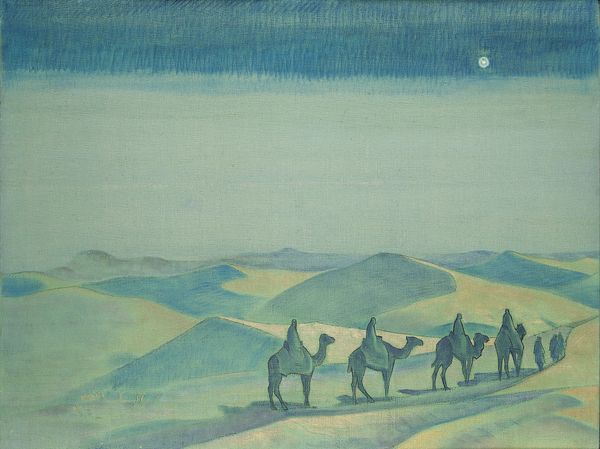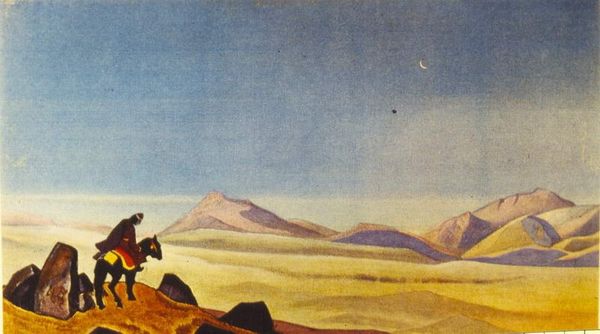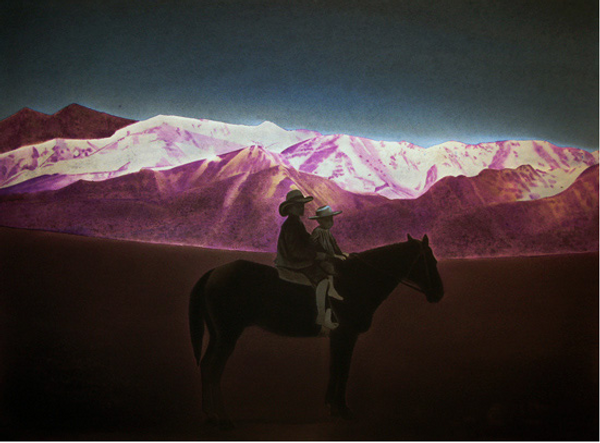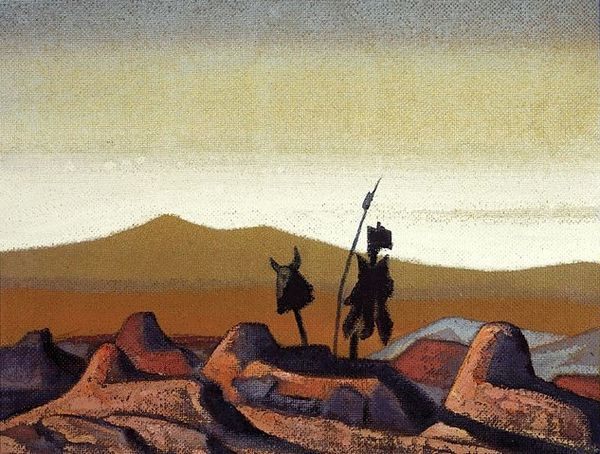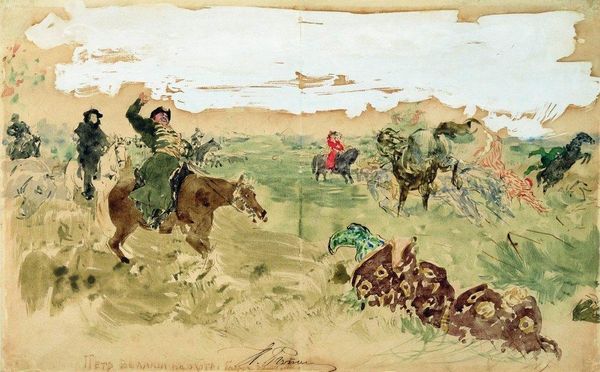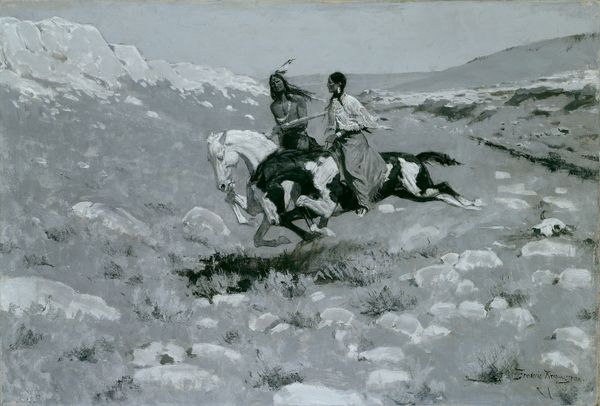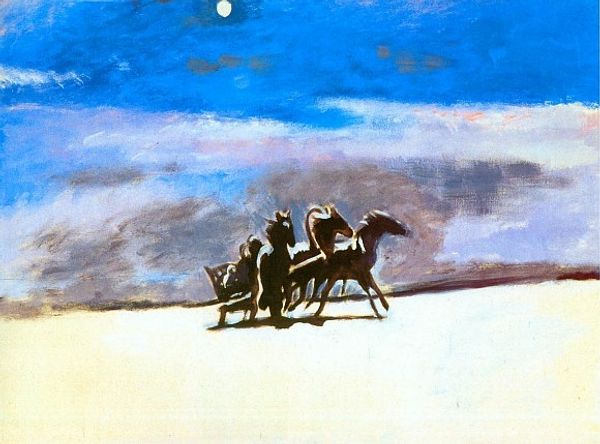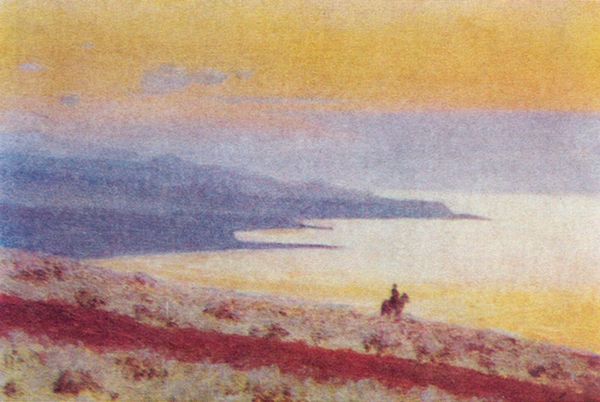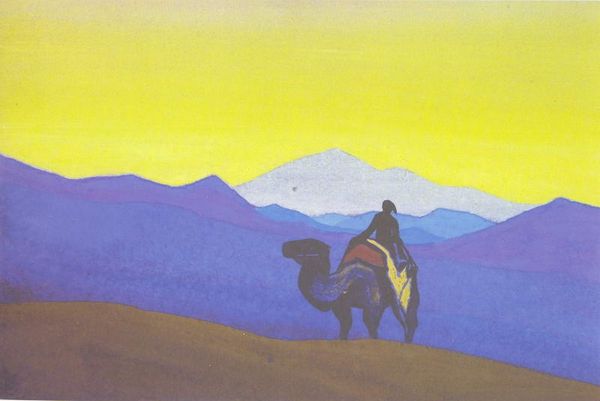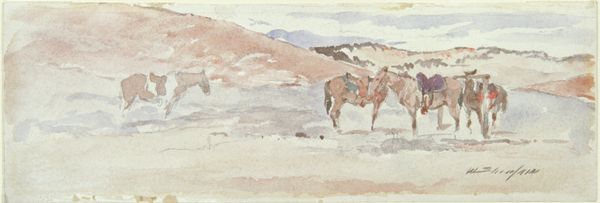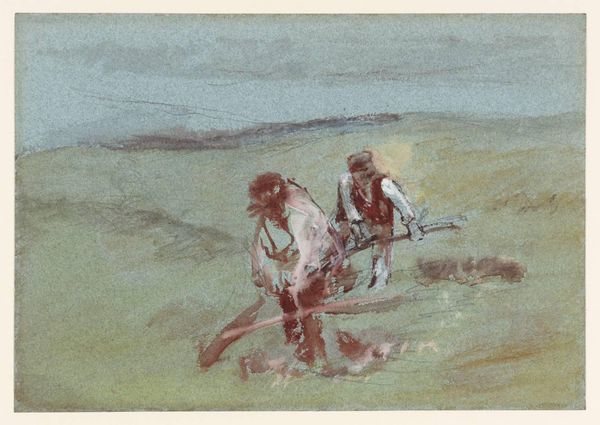
Copyright: Public domain
Editor: Here we have Nicholas Roerich’s watercolor, “Lonely Stranger,” from 1931. The vast sky and hazy mountains evoke a sense of solitude. How does this image speak to its historical context? Curator: It's fascinating how Roerich blends Romanticism with Orientalism. The "lonely stranger," a figure on a camel, appears against this grand landscape. Roerich was deeply interested in Eastern spirituality, and travelled extensively in Central Asia, and he helped to establish the Roerich Museum in New York to foster connections with Asian cultures. How do you think his work engaged with or challenged Western perceptions of the "Orient" at that time? Editor: It seems to me it perpetuates some of those romantic ideas, doesn't it? The solitary figure in a seemingly timeless landscape… it's all very "exotic," in a way that maybe flattens the diversity of those cultures. Curator: Precisely! And his emphasis on spirituality must be viewed in light of rising cultural institutions such as museums that were responsible for disseminating particular world views to mass audiences. Were these kinds of works promoting genuine cross-cultural understanding, or more a Western fantasy imposed on another culture? Editor: That makes me reconsider my initial impression. It is not just a peaceful image of solitude. I realize that Roerich’s view, mediated through art, contributes to complex and ongoing debates about cultural appropriation. Curator: Yes, this watercolor serves as a reminder of the complexities inherent in cross-cultural representation and artistic license. By understanding these sociopolitical currents, the work provides valuable historical lessons.
Comments
No comments
Be the first to comment and join the conversation on the ultimate creative platform.
